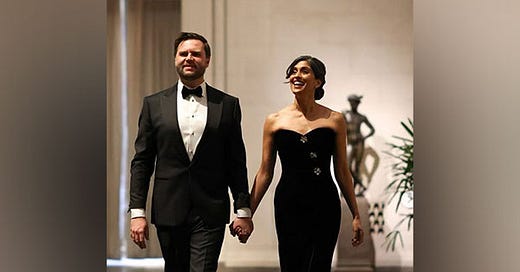J.D. Vance is about to discover that the Vice Presidency comes with an office in the U.S. Senate, a house at the Naval Observatory and an airplane, but everything else is discretionary. Even the West Wing office is a modern courtesy. Being Vice President is an opportunity to gain power and influence that depends mostly on one factor: keeping Donald Trump happy.
Piss the president off and Air Force II won’t get any gas to leave Joint Base Andrews.
It’s commonly believed that the vice president functions as sort of a deputy president, the second most powerful person in the government. That’s not typically how it works. In the Trump Two White House, that person might be Elon Musk, but usually the deputy president is the White House Chief of Staff.
The Chief of Staff calls the shots for most of the cabinet, is in Situation Room meetings and negotiates with Congress. In the Biden White House, Chief of Staff Ron Klain was firmly in charge. No big decisions were made without him. I met with him in my first days on Vice President Kamala Harris’ team to talk through my role and his thoughts on the Vice President’s priorities. Keeping Ron happy was important.
Also, it can’t be an accident that the Vice President’s West Wing office sits right next to the Chief of Staff’s suite. Nobody goes in or out unnoticed.
While every Vice President is different, the dynamics of the job have been similar since Walter Mondale and President Jimmy Carter upgraded it. There are generally two approaches. Vice President Al Gore focused on a few core issues like technology. Dick Cheney engineered the debacle in Iraq.
Kamala Harris was more of a generalist. She focused on infrastructure and abortion rights, encouraging allies in the run-up to Russia’s invasion for Ukraine, and helping to choose Ketanji Brown Jackson for the Supreme Court.
Whatever the role on paper, if people believe Vance has the president’s ear, they will talk to him. Perhaps more importantly, they’ll listen when he talks. If not, they’ll show up for photo ops when he visits their states but otherwise keep it moving.
Here’s where Vance must be brutally honest with himself. What’s his core competency? His strategic advantage? Why should the president listen to him more than anyone else? In the first term, Trump was a relative newcomer to Washington. Like Carter, Reagan, Clinton, W. and Obama, he picked a vice president with more DC experience to help navigate the Beltway.
Neither George H.W. Bush nor Joe Biden needed that kind of a guide, so their vice presidents had to stake out different ground. In addition to policy, Harris was an emissary, carrying messages between the White House and the Democratic Party’s base.
Trump Two doesn’t fit either mold. The President has an outsider’s sensibility, but an insider’s ability to influence Washington powerbrokers. That means Vance has a tough job. He must figure out how to sing backup distinctively enough to be noticed without pricking the personality of the man out front.
If FDR’s first Vice President John Nance Garner was right and the job isn’t worth a warm bucket of bodily fluid, why do so many smart and successful people take it? The answer is obvious. They want the chance to be president, even though the record of ascension is spotty at best.
At least every Democratic Vice President since Hubert Humphrey won their party’s nomination. Not true for Republicans. And the only modern Vice Presidents to make it to the Oval Office via the ballot box were George H.W. Bush and Joe Biden. Each of them had one thing in common. The public generally liked the presidents they served.
That takes us back to where we started.
After three years and eleven months of keeping Trump happy, Mike Pence tried to hold on to a piece of his integrity and Trump left him to the dogs on January 6th. That’s why nobody should look to J.D. Vance for any crises of conscience. He’s given up so much of his integrity to get there, why stop now. He has only one job: Keep Trump happy and popular at all costs
.
I hope J.D. and Usha enjoy the plane.





Good stuff!! Thnx